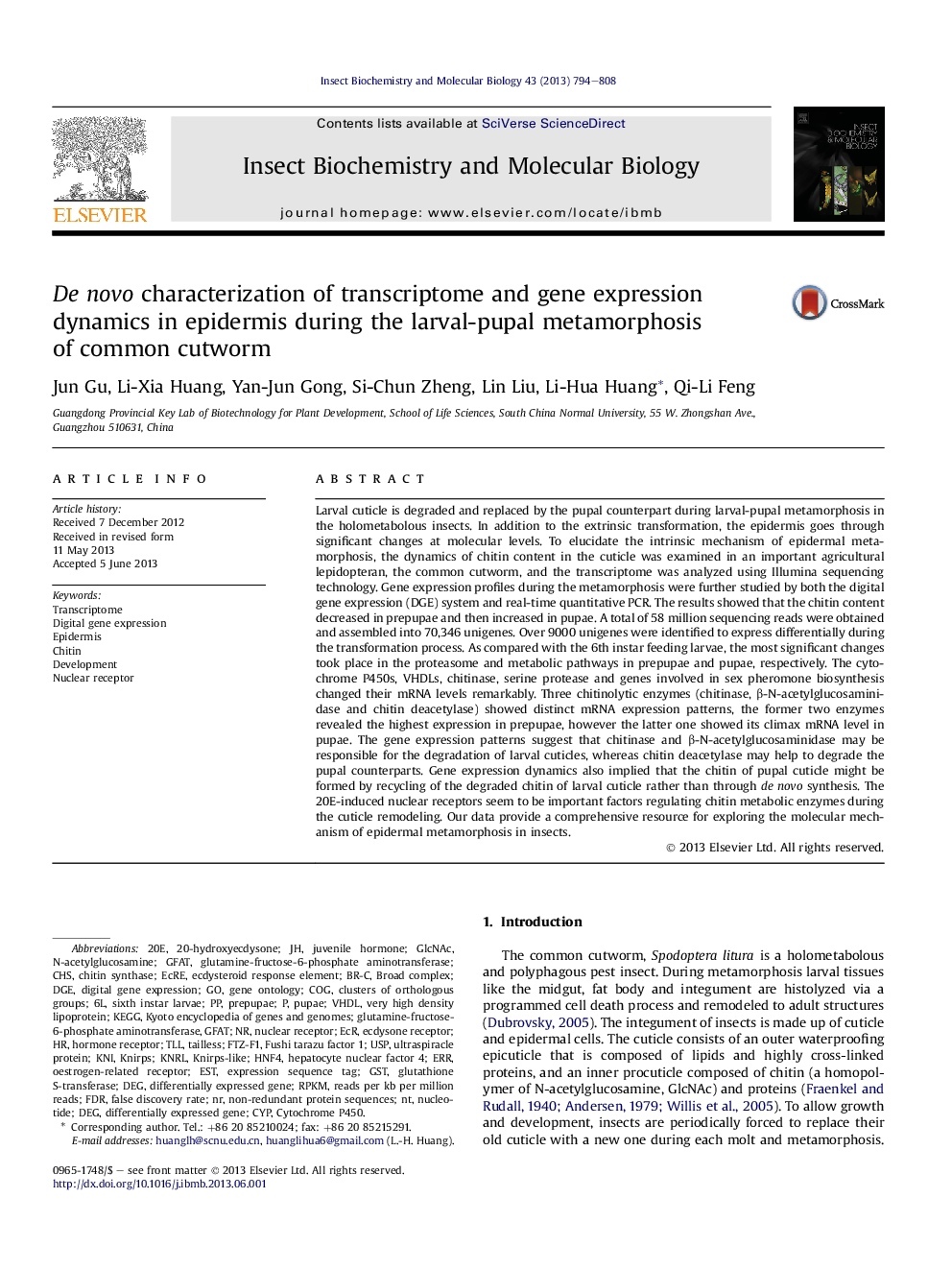| کد مقاله | کد نشریه | سال انتشار | مقاله انگلیسی | نسخه تمام متن |
|---|---|---|---|---|
| 1982133 | 1062257 | 2013 | 15 صفحه PDF | دانلود رایگان |

• Over 9000 unigenes were identified to express differentially during the epidermal metamorphosis.
• The mRNA levels of P450s, VHDLs, chitinase and genes involved in sex pheromone biosynthesis changed remarkably.
• Three chitinolytic enzymes are responsible for the degradation of larval and pupal cuticles, respectively.
• Pupal cuticle might be formed by recycling of the degraded chitin of larval cuticle rather than through de novo synthesis.
• The 20E-induced nuclear receptors seem to be important factors regulating chitin metabolic enzymes.
Larval cuticle is degraded and replaced by the pupal counterpart during larval-pupal metamorphosis in the holometabolous insects. In addition to the extrinsic transformation, the epidermis goes through significant changes at molecular levels. To elucidate the intrinsic mechanism of epidermal metamorphosis, the dynamics of chitin content in the cuticle was examined in an important agricultural lepidopteran, the common cutworm, and the transcriptome was analyzed using Illumina sequencing technology. Gene expression profiles during the metamorphosis were further studied by both the digital gene expression (DGE) system and real-time quantitative PCR. The results showed that the chitin content decreased in prepupae and then increased in pupae. A total of 58 million sequencing reads were obtained and assembled into 70,346 unigenes. Over 9000 unigenes were identified to express differentially during the transformation process. As compared with the 6th instar feeding larvae, the most significant changes took place in the proteasome and metabolic pathways in prepupae and pupae, respectively. The cytochrome P450s, VHDLs, chitinase, serine protease and genes involved in sex pheromone biosynthesis changed their mRNA levels remarkably. Three chitinolytic enzymes (chitinase, β-N-acetylglucosaminidase and chitin deacetylase) showed distinct mRNA expression patterns, the former two enzymes revealed the highest expression in prepupae, however the latter one showed its climax mRNA level in pupae. The gene expression patterns suggest that chitinase and β-N-acetylglucosaminidase may be responsible for the degradation of larval cuticles, whereas chitin deacetylase may help to degrade the pupal counterparts. Gene expression dynamics also implied that the chitin of pupal cuticle might be formed by recycling of the degraded chitin of larval cuticle rather than through de novo synthesis. The 20E-induced nuclear receptors seem to be important factors regulating chitin metabolic enzymes during the cuticle remodeling. Our data provide a comprehensive resource for exploring the molecular mechanism of epidermal metamorphosis in insects.
Figure optionsDownload high-quality image (165 K)Download as PowerPoint slide
Journal: Insect Biochemistry and Molecular Biology - Volume 43, Issue 9, September 2013, Pages 794–808